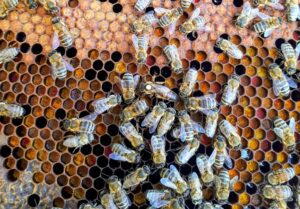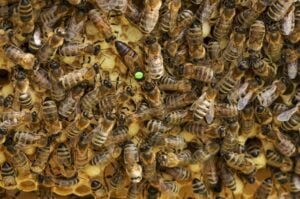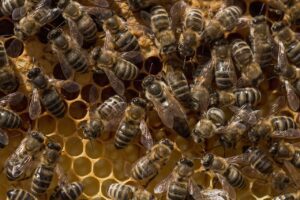Buckfast bees, a hybrid breed developed by Brother Adam in the early 20th century, have become a popular choice among beekeepers worldwide. Known for their high productivity, gentle nature, and disease resistance, these bees offer several benefits. However, they also come with their own set of challenges. This article explores the advantages and disadvantages of keeping Buckfast bees, providing a detailed look at what beekeepers can expect.

Table of Contents
Are Buckfast Bees Aggressive?
Gentle Nature
Buckfast bees are known for their gentle temperament, which sets them apart from other bee species. They are less likely to sting, making them a favorite among beekeepers who prefer a calm hive.
- Low aggression levels
- Suitable for beginner beekeepers – Beginner’s Guide to Beekeeping: 8 Proven Steps
- Reduced risk of stings
Handling and Management
Due to their calm demeanor, they are easier to handle during hive inspections and maintenance. This makes them ideal for educational programs and urban beekeeping where human interactions are frequent.
- Better for close human interactions
- Easier hive management
- Ideal for demonstrations
How to Know If You Have Buckfast Honey Bees
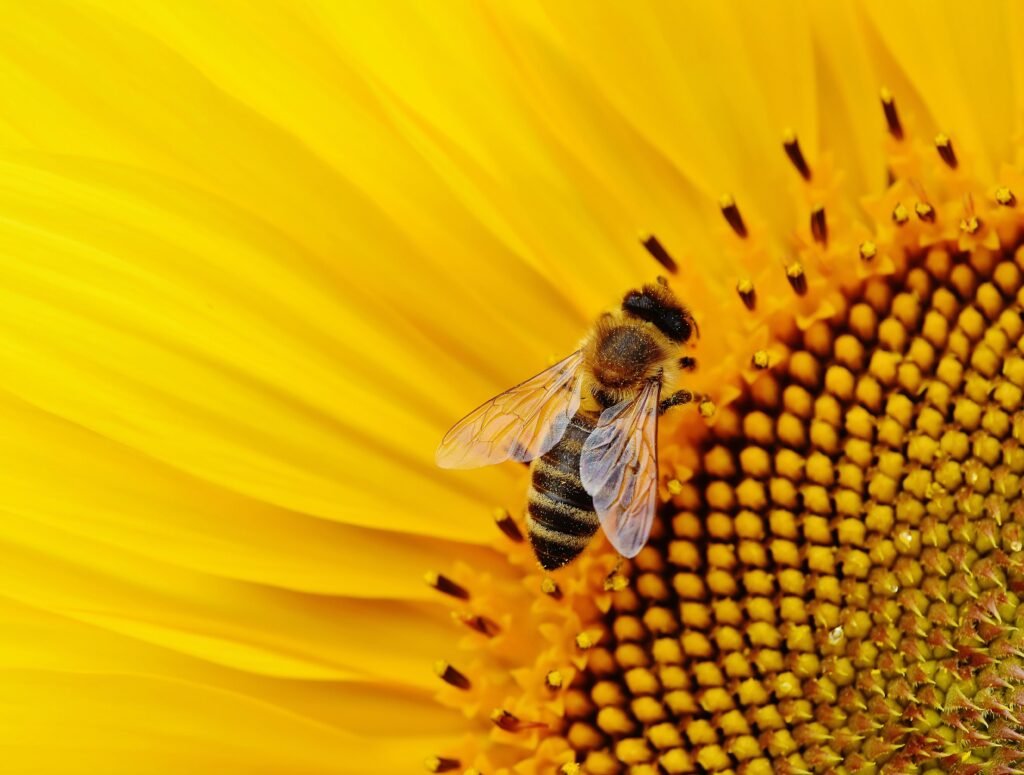
Identification by Appearance
Buckfast bees can be identified by their distinct appearance. They are typically a mix of various bee subspecies, resulting in a diverse range of colors from light to dark. Observing the physical characteristics can help in identification.
Diverse Coloration
One of the most noticeable features of Buckfast bees is their diverse coloration. Unlike other bee breeds that have a uniform color pattern, Buckfast bees exhibit a range of colors due to their hybrid nature. This can include shades of:
- Golden Yellow: Some Buckfast bees display bright, golden-yellow stripes, similar to those seen in Italian bees.
- Dark Brown to Black: Others might have darker segments, resembling the Carniolan or German black bees.
- Mixed Hues: Many Buckfast bees have a combination of light and dark stripes, creating a mosaic pattern that is quite distinct.
This variety in coloration can make Buckfast bees stand out from other bee species in your apiary.
Mix of Subspecies Traits
Buckfast bees inherit physical traits from various subspecies used in their breeding. This blend results in bees with characteristics that might not be found together in purebred bees. Key traits include:
- Body Size: Buckfast bees generally have a medium body size, falling between the larger Italian bees and smaller Carniolan bees.
- Wing Structure: Their wings are strong and well-formed, enabling them to be efficient foragers over long distances.
- Hair Coverage: They have a moderate amount of hair on their thorax, aiding in pollen collection, but not as much as the densely-haired Caucasian bees.
These mixed traits can help in identifying Buckfast bees when observing the hive.
Visual Identification Tips
To accurately identify Buckfast bees, follow these visual tips:
- Look for Behavioral Clues: While observing physical traits, also note the bees’ behavior. Buckfast bees are generally calm and less aggressive, which can be an additional clue when combined with their appearance.
- Observe the Color Patterns: Look for bees with varied color patterns, ranging from light to dark. Buckfast bees are not uniformly colored, which is a key indicator of their hybrid nature.
- Check the Hive Population: Buckfast colonies tend to have a consistent mix of different colored bees. This diversity within a single colony is a strong sign that you have Buckfast bees.
- Compare with Other Bees: If you have other bee species in your apiary, compare their appearance with suspected Buckfast bees. The distinct coloration and mixed traits will be more apparent in contrast with purebred bees.
Behavior and Productivity
Observing their behavior and productivity can also help in identifying Buckfast bees. Their high honey production, gentle nature, and strong brood production are key indicators. Modern Honey Production: 12 Proven Methods to Boost Output.
- High honey yield
- Gentle temperament
- Strong brood production
Genetic Testing
For precise identification, genetic testing can be conducted. This scientific approach ensures accurate identification, especially in cases where visual and behavioral observations are inconclusive.
- Accurate identification method
- Useful for research and breeding
- Ensures genetic purity
Comparing Buckfast Bees to Other Common Bee Species
Buckfast Bees vs. Italian Bees
Productivity
Both Buckfast and Italian bees are known for their high productivity, but there are differences in their foraging behavior and honey production rates.
- Buckfast Bees: Known for their efficient foraging and high nectar collection, leading to reliable honey yields.
- Italian Bees: Also highly productive but may require more resources due to their larger colony size and higher brood production.
Temperament
The gentle nature of Buckfast bees makes them a preferred choice for beekeepers seeking less aggressive bees, while Italian bees are also gentle but slightly more defensive.
- Buckfast Bees: Generally very calm and easy to manage, making them ideal for novice beekeepers.
- Italian Bees: Gentle but can be more defensive than Buckfast bees, particularly when the colony is large.
Disease Resistance
Buckfast bees are selectively bred for disease resistance, which can reduce the need for chemical treatments, whereas Italian bees are susceptible to certain diseases and pests.
- Italian Bees: While robust, they are more vulnerable to diseases like Nosema and pests like Varroa mites.
- Buckfast Bees: Have strong resistance to common bee diseases and pests, contributing to healthier colonies.
Buckfast Bees vs. Carniolan Bees
Winter Hardiness
Carniolan bees are renowned for their winter hardiness, but Buckfast bees also exhibit strong resilience to cold weather.
- Buckfast Bees: Capable of withstanding harsh winters with minimal colony losses.
- Carniolan Bees: Extremely well-suited for cold climates, often outperforming other breeds in winter survival.
- Winter Bee Hive Wraps: 6 Step Beginner Guide to Protect Bees
Swarming Tendency
Both breeds have a tendency to swarm, but Buckfast bees might require more vigilant swarm management. Ultimate Swarm Prevention Guide: 12 Proven Beekeeper Tips.
- Buckfast Bees: Prone to swarming, requiring careful monitoring and management.
- Carniolan Bees: Also have a high swarming tendency, but their swarms are usually more manageable.
Foraging Behavior
Buckfast bees are efficient foragers, while Carniolan bees are known for their ability to forage in cooler temperatures and less favorable conditions.
- Carniolan Bees: Excellent at foraging in cool weather, which extends their foraging season.
- Buckfast Bees: Efficient and quick foragers, maximizing nectar collection.
Buckfast Bees vs. Russian Bees
Disease Resistance
Both Buckfast and Russian bees are bred for disease resistance, but Russian bees have a slight edge in resisting Varroa mites.
- Buckfast: Strong disease resistance
- Russian: Superior mite resistance
Productivity
Buckfast bees generally have higher honey production compared to Russian bees, making them a preferred choice for commercial honey production.
- Russian: Moderate productivity
- Buckfast: High productivity
Advantages of Keeping Buckfast Bees
1. High Honey Production
Consistent Yield
They are renowned for their impressive honey production. They are prolific foragers and can collect nectar efficiently even in less-than-ideal weather conditions. This consistency ensures a steady honey yield throughout the season.
- Efficient Foragers: Buckfast bees are adept at locating and collecting nectar from a wide variety of flowers, maximizing their foraging efficiency.
- High Nectar Collection Rate: These bees have a remarkable ability to gather large amounts of nectar quickly, which contributes to their high honey production.
- Reliable Honey Yield: Thanks to their consistent foraging and nectar collection, Buckfast bees provide a dependable honey yield, even in varying environmental conditions.
2. Gentle Temperament
Less Aggression
They are celebrated for their gentle nature, which makes hive management easier and safer. They exhibit less aggressive behavior compared to other breeds, reducing the risk of stings during inspections and maintenance.
- Less Aggressive Behavior: Buckfast bees are less likely to sting, which makes handling and managing the hive much safer and more pleasant.
- Easier Hive Management: Their calm demeanor means beekeepers can perform inspections and maintenance without causing undue stress to the bees or themselves.
- Safer for Beekeepers and Bystanders: The reduced aggression of Buckfast bees ensures a safer environment for beekeepers and anyone nearby.
3. Disease Resistance
Strong Genetic Traits
Buckfast bees have been selectively bred for their resistance to common bee diseases, such as Varroa mites and Nosema. This genetic strength leads to healthier colonies and reduces the need for chemical treatments.
- Reduced Disease Incidence: They have a lower incidence of common bee diseases, leading to healthier and more resilient colonies.
- Healthier Colonies: Their strong genetic resistance helps maintain overall colony health, reducing the need for interventions.
- Less Need for Chemical Treatments: Their disease resistance minimizes the necessity for chemical treatments, promoting more natural beekeeping practices.
Improved Colony Survival
Their resistance to diseases significantly improves colony survival rates, making them a sustainable choice for beekeepers looking to maintain long-term healthy hives.
- Lower Mortality Rates: The robust health of them leads to lower colony mortality rates, ensuring the longevity of the hive.
- Sustainable Beekeeping: The improved survival rates contribute to more sustainable beekeeping practices, with fewer colony losses over time.
- Enhanced Colony Resilience: Buckfast bees’ disease resistance boosts the overall resilience of the colony, helping it thrive even under challenging conditions.
4. High Brood Production
Rapid Colony Growth
Buckfast bees are known for their high brood production, which leads to rapid colony growth. A strong and growing colony means a more robust workforce to support hive activities.
- Quick Population Increase: They can rapidly increase their population, ensuring a strong workforce for foraging and hive maintenance.
- Stronger Workforce: The high brood production results in a larger number of worker bees, enhancing the hive’s productivity.
- Better Honey Production Potential: With more bees available for foraging, the colony can produce more honey, increasing overall yields.
Effective Pollination
A larger bee population enhances pollination efficiency, benefiting both the hive and surrounding agricultural activities. This makes them a valuable asset for crop pollination.
- Improved Crop Yields: Their efficient pollination can lead to better crop yields, benefiting local farmers and gardeners.
- Enhanced Pollination Services: Buckfast bees provide reliable pollination services, supporting the health and productivity of surrounding ecosystems.
- Beneficial for Local Ecosystems: Their effective pollination contributes to the overall health of local ecosystems, promoting biodiversity.
5. Winter Hardiness
Cold Weather Resilience
Buckfast bees are hardy and can withstand harsh winter conditions better than some other bee breeds. This resilience ensures that colonies survive through the winter and are ready for spring activities.
- Better Winter Survival Rates: They have higher survival rates during winter, reducing the likelihood of colony losses during cold months.
- Reduced Winter Losses: Their resilience to cold weather means fewer colonies are lost over the winter, ensuring a strong start to the new season.
- Suitable for Colder Climates: Buckfast bees are an excellent choice for beekeepers in colder regions, where winter survival is crucial.
Efficient Food Storage
These bees are efficient in storing food for winter, ensuring the colony has enough resources to sustain itself during the colder months. This efficiency reduces the need for supplemental feeding.
- Adequate Winter Stores: They store ample food for winter, minimizing the risk of starvation during the colder months.
- Reduced Need for Supplemental Feeding: Their efficient food storage practices lessen the need for beekeepers to provide additional feed, saving time and resources.
- Better Colony Health During Winter: With sufficient winter stores, Buckfast bees maintain better health throughout the winter, ensuring a strong colony in spring.
Disadvantages of Keeping Buckfast Bees
6. Swarming Tendency
Frequent Swarming
Buckfast bees have a higher tendency to swarm, which can lead to the loss of a significant portion of the colony. Swarming behavior can be managed but requires vigilant beekeeping practices.
- Increased Swarming Behavior: Buckfast bees are more prone to swarming, which can lead to colony division and potential losses.
- Potential Colony Loss: The frequent swarming can result in the loss of a large number of bees, impacting overall hive productivity.
- Requires Careful Management: Effective swarming management practices are essential to prevent and control swarming tendencies.
Need for Regular Monitoring
The frequent swarming tendency necessitates regular hive inspections to prevent and manage swarming. This can be time-consuming and requires experienced beekeepers to keep the colony intact.
- Increased Hive Inspections: Beekeepers need to conduct more frequent inspections to monitor for swarming signs, increasing the workload.
- More Time-Consuming: Managing swarming behavior can be labor-intensive, requiring significant time and effort from beekeepers.
- Requires Experience and Vigilance: Successful swarming management demands experience and careful attention to hive conditions.
7. Dependency on Strong Queens
Queen Replacement Challenges
Buckfast bees heavily depend on a strong, healthy queen for colony success. Replacing queens can be challenging, as the colony might not readily accept a new queen, leading to potential setbacks. Successfully Introducing a New Queen – 12 Key Strategies.
- Critical Queen Health: The overall health and productivity of the colony are highly dependent on the queen’s health and vitality. Discover 6 Fascinating Ways Queen Bees Impact Hive Behavior.
- Difficulty in Queen Replacement: Replacing a queen can be problematic, with the risk of the colony rejecting the new queen.
- Potential Colony Decline with Weak Queens: A weak or failing queen can lead to a decline in colony health and productivity, necessitating careful management.
- Locating the Queen Bee – 10 Proven Tips for Beekeepers
Queen Introduction Issues
Introducing a new queen can be problematic with them, as they may reject or harm the new queen. This can complicate the management of the hive and affect colony productivity.
- Risk of Queen Rejection: They might reject a new queen, leading to potential disruptions in the hive.
- Requires Careful Introduction: Introducing a new queen demands careful and strategic methods to ensure acceptance.
- Potential for Queen Loss: The introduction process carries the risk of the new queen being harmed or killed, impacting colony stability.
8. Need for Ample Forage
High Nutritional Needs
Due to their high productivity, they require abundant forage, which might not be available in all areas. This necessitates careful consideration of the local environment before starting a Buckfast bee colony.
- High Forage Requirement: Buckfast bees need large amounts of nectar and pollen to support their high productivity.
- Dependent on Floral Availability: The availability of diverse and abundant forage is crucial for maintaining healthy Buckfast colonies.
- Potential Need for Supplemental Feeding: In areas with limited forage, beekeepers might need to provide supplemental feeding to meet the nutritional needs of Buckfast bees. Choosing Bee Feeders: 10 Proven Tips and How to Use Them.
Competition with Local Bees
In areas with limited forage, they might outcompete local bee populations, affecting biodiversity and potentially causing ecological imbalances.
- Possible Impact on Local Bees: Buckfast bees may outcompete native bee species for resources, affecting local biodiversity.
- Increased Competition for Resources: Their high forage needs can lead to increased competition with other pollinators in the area.
- Ecological Considerations: Beekeepers need to consider the potential ecological impact of introducing Buckfast bees in areas with limited floral resources.
9. Maintenance Requirements
Regular Hive Inspections
Buckfast bees require regular hive inspections to manage their high productivity and swarming tendencies. This can be demanding for beekeepers in terms of time and effort.
- Frequent Hive Checks: Regular inspections are necessary to monitor colony health and prevent swarming.
- Time-Intensive Management: The need for frequent inspections and management tasks can be time-consuming for beekeepers.
- Needs Experienced Beekeepers: Effective management of Buckfast bees requires experience and skill, particularly in handling their swarming tendencies.
Equipment and Space
Their rapid colony growth means beekeepers need adequate equipment and space to accommodate expanding hives. This can involve additional investments in hive boxes and other beekeeping supplies.
- Additional Hive Equipment: Beekeepers may need to invest in more hive boxes and frames to accommodate the growing colony.
- More Space Required: Expanding Buckfast colonies require sufficient space to thrive, necessitating proper planning and management.
- Investment in Resources: Managing Buckfast bees may require additional financial investment in equipment and supplies.
10. Susceptibility to Certain Pests
Vulnerability to Wax Moths
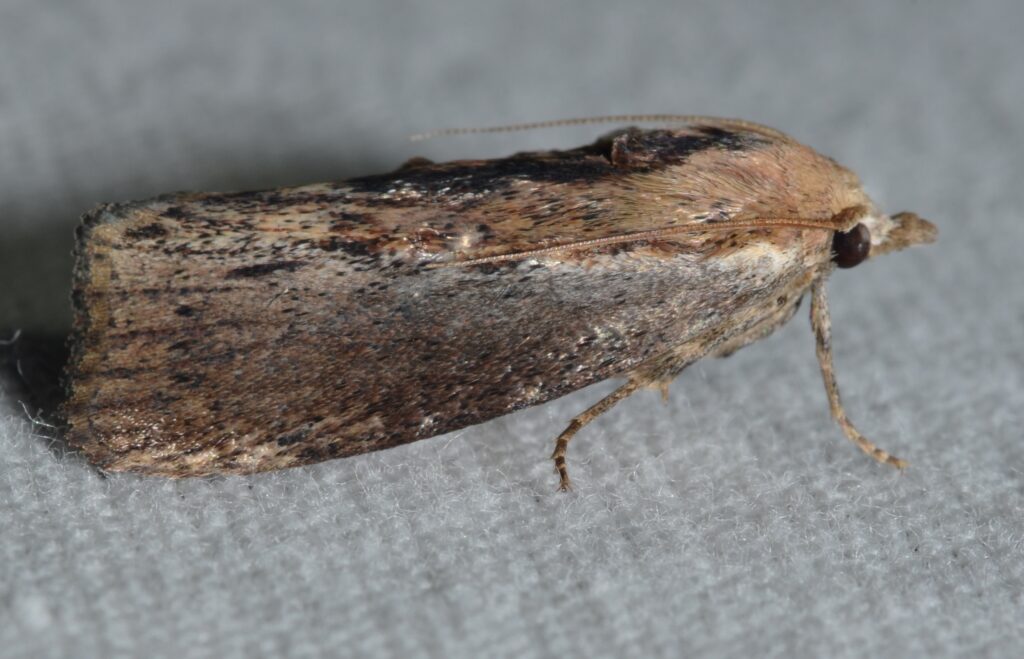
Despite their disease resistance, Buckfast bees can be susceptible to pests like wax moths, which can damage hive structures and impact colony health.
- Wax Moth Infestations: Buckfast hives can be vulnerable to wax moth infestations, which can damage comb and weaken the colony.
- Need for Regular Monitoring: Beekeepers need to regularly monitor for signs of wax moths and take preventive measures to protect the hive.
- Potential Damage to Hive Structure: Wax moth infestations can cause significant damage to hive structures, necessitating repairs and maintenance.
Risk from Varroa Mites

While Buckfast bees show some resistance to diseases, they are still at risk from Varroa mites, which require vigilant monitoring and management.
- Varroa Mite Threat: Varroa mites remain a significant threat to Buckfast bees, requiring regular monitoring and treatment.
- Ongoing Management Efforts: Controlling Varroa mite infestations demands continuous management efforts and vigilance.
- Impact on Colony Health: Varroa mites can severely impact colony health if not properly managed, necessitating proactive measures from beekeepers.
Additional Resources
USDA PROGRAMS AND RESOURCES TO SUPPORT BEEKEEPERS
Conclusion
Buckfast bees offer a unique blend of benefits that make them a popular choice among beekeepers. Their efficient foraging, high honey yield, and gentle temperament make them ideal for both novice and experienced apiarists. However, they come with their own set of challenges, including potential vulnerability to pests and a tendency to swarm. By understanding their characteristics, from their diverse coloration to their behavior in comparison to other bee species, beekeepers can make informed decisions about integrating Buckfast bees into their hives.
Whether you are drawn to their productive nature or their manageable behavior, Buckfast bees provide valuable contributions to beekeeping practices. Weighing their advantages and disadvantages will help you determine if they are the right fit for your apiary, ensuring a successful and harmonious beekeeping experience.

